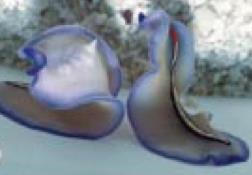Overview
Brief Summary
Distribution
Life cycle
Reproduction
Behaviour
Visual Behaviour
Morphology and Physiology
External Morphology
Internal Anatomy
References & More Information
Bibliographies |
Reproduction
The class Turbellaria has a variety of ways to reproduce, with and without partners. A method which is commonly known and has been thoroughly studied is regeneration. This occurs once an organism has been either cut in half or the head has been cut off. In either of these situations a new head will grow and the animal will bisect longitudinally, therefore creating two worms (Ruppert, et al., 2004). Although this field has been well researched (looking into regenerating cells for human use) uncertainty is still present with respect to how this regeneration occurs (Ruppert, et al., 2004).
The other method which is known to occur in Turbellaria is sexual reproduction. The majority of species in Turbellaria are hermaphrodites, so this raises the question of why they reproduce sexually. The main benefit of sexual reproduction is gene transfer between populations, which insures that beneficial genes are passed on. Some species of Pseudoceros are known to inject sperm under the partner's skin and the sperm then migrates to the ovaries (Michiels and Newman, 1998; Ruppert, et al., 2004). The sperm is injected into the other organism by first having a “phallic duel” where both flatworms rear up with everted penises and try to stab one another (Michiels and Newman, 1998). The fight can last upwards of 15mins and the “loser” then becomes the female to carry the eggs. It has been documented that Pseudoceros ferrugineus reproduces through regeneration and has only rarely been caught sexually reproducing through this method. Further studies would have to be undertaken to fully understand the life cycle of this animal, as other papers have observed both methods of reproduction.

Figure 1: Two individuals of the species P.bifurcus, with everted penises trying not to be inseminated (Michiels and Newman 1998) |
|